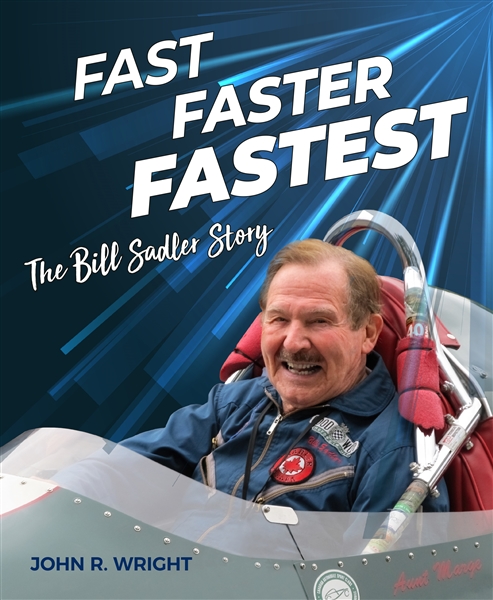
Realize your Ford Coyote engine’s full potential by using this detailed resource as a guide to select the right parts for the street or the strip.
Veteran Ford writer and historian, Jim Smart, explains and highlights all of the latest and greatest options to achieve more horsepower and torque, and of course, faster quarter-mile times in Ford Coyote Engines: How to Build Max Performance-Revised Edition.
In this Revised Edition, now covering Generation III engines as well as Generation I & II, upgrades included are engine building techniques, cold-air induction kits, supercharger and pulley kits, better exhaust headers, fuel system and ECU tuning upgrades, and more. Both Ford and the aftermarket have produced an array of parts to squeeze even more power out of your Coyote.
Ford introduced its first “clean slate design” V-8 engines in the early 1990s in Ford, Lincoln, and Mercury models. Known as the “Modular” engine family, the 4.6L engines employed new overhead cams, multi-valve performance, distributorless ignition, and more. This engine had new technology for its time, and it proved to be an extremely durable workhorse that logged hundreds of thousands of miles in police and taxi applications as well as light-duty trucks. And, of course, hotter versions, and even supercharged versions, found their way into performance applications such as Mustang GTs and Cobras.
By 2011, Ford wanted something hotter and more current, especially for its flagship Mustang GT and GT350 models, which were suddenly competing with new 6.2L LS3 engines in Camaros and 6.4L Hemi engines in Challengers. Enter Ford’s new 5.0L “Coyote” engine with Twin Independent Variable Cam Timing (Ti-VCT); it was an evolution of the earlier 4.6L and 5.4L Modular designs. Although the new Coyote engine had increased displacement, it still had far fewer cubes than the competition. Despite less displacement, the Coyote could hold its own against bigger Chevy and Chrysler mills thanks to advanced technology, such as 4V heads with better port and valvetrain geometry. The Coyote is also Ford’s first foray into technology that includes Ti-VCT and cam-torque-actuated (CTA) function, which is a fancy way of saying variable cam timing for an incredible power curve over a broader RPM range. Now, in Generation III, Ford has implement a system using both Port and Direct Fuel Injection, taking advantage of the benefits of both systems in a single application.
Even with all of this new technology, there is always room for improvement. If you are looking for even more power from your new Coyote, look no further than this volume.

Pre-order now for early 2023 delivery
This biography of Bill Sadler tells the story of an innovator who set the racing world astir with race cars of his own invention. Progressing from a Hillman Minx convertible to one of the fastest race cars ever, to a Piranha ground attack aircraft, Bill Sadler has worked and raced throughout the US and in Area 51, a top-secret USAF facility in Nevada.
Sadler laid out the design of his first car in chalk on the floor of his shop in Hamilton, Ontario. He progressed to creating race cars, including the revolutionary Formula Libre, with its Chevrolet V-8 engine behind the driver and an open-wheeled set up, that appalled the owners of Listers, Scarabs and other racing specials. His fertile mind produced the Sadler Mark V, this time with major sponsorship from Comstock Engineering Inc.
After leaving racing in September 1961, Bill returned to school and graduated from MIT with a degree in Electronic Engineering. He worked in Area 51 on advanced secret projects and later built various prototype aircraft.
Bill returned to vintage racing in 2000 with his Sadler Mark III and later his own Sadler Formula Junior.
Written with the full cooperation of Bill Sadler before he passed away in early 2022, this book contains never-before-seen photographs and rarely heard stories from a man whose talent, like an iceberg, lay nine tenths below the surface.

The Kellner Affair tells the fascinating story of some of the most influential people in the French luxury car business before the War and how they came together and fought bravely against the Nazi occupation force in Paris. It tells how they formed a resistance group and gathered intelligence ̶ how they were betrayed by double agents, and how they were executed in 1942.
These people included the famous coachbuilder Jacques Kellner, the designer Georges Paulin, and Walter Sleator, the director of Rolls-Royce France, who survived. The book goes deeply into their talent, their work, their lives, their cars, their loved ones and relies on newly discovered archive material as well as private documents that have never previously been published.
The Kellner Affair is the first factual account of these tragic and gripping events: what happened, how it happened, who was to blame, who was punished, and who was not.
Volumes I and II also include an in-depth discussion of aerodynamic cars, the famous streamlined designs of Georges Paulin, and the duplicitous way in which Walter Sleator assumed control of Rolls-Royce France after the Liberation. In addition, Volume III contains a large portfolio of period images of Kellner-bodied cars such as Hispano-Suiza, Renault, Rolls-Royce, Bugatti, Farman, and many more, along with period articles and a wealth of design drawings as well as facsimile reprints of Kellner brochures. The USB flashdrive in Volume III links to 401 pages of scanned source and reference material that document the book.
- 3-volume fabric-bound with inlaid photo (includes bonus material on USB)
- Fabric-bound slipcase
- Page count: 1,056
- Flash Drive: 401 pages (click here for USB drive/stick instructions)
- Total images: 1,568
- Flash Drive: 388 images
- Limited to 1,000 numbered copies signed by the authors

The fabulous success of Ford’s Mustang in America inspired Ford’s British and German branches to do likewise. The sporty coupe they created, the Ford Capri, was launched in 1969 as the first joint production of the brand-new Ford of Europe. Billed as “The car you always promised yourself”, the Capri was a signal success with almost 1.9 million made when production ended in 1987. Its rakish lines, keen pricing and broad power offerings gave the Capri wide appeal not only in Europe but also in America, which imported the Mark I and II versions from 1970 to 1977 for sale through Lincoln-Mercury dealers. The Mark III for Europe followed in 1978. No paper tigers, these classy coupes were formidable rally and racing cars as this book’s illustrations reveal. A Capri insider, former Ford of Europe executive Karl Ludvigsen introduces the Capri saga and illuminates the many rare images from his world-famous Ludvigsen Library. A feast for fans of the Blue Oval, this book’s pages bring to life the exciting story of one of the best-loved Fords of all time.






